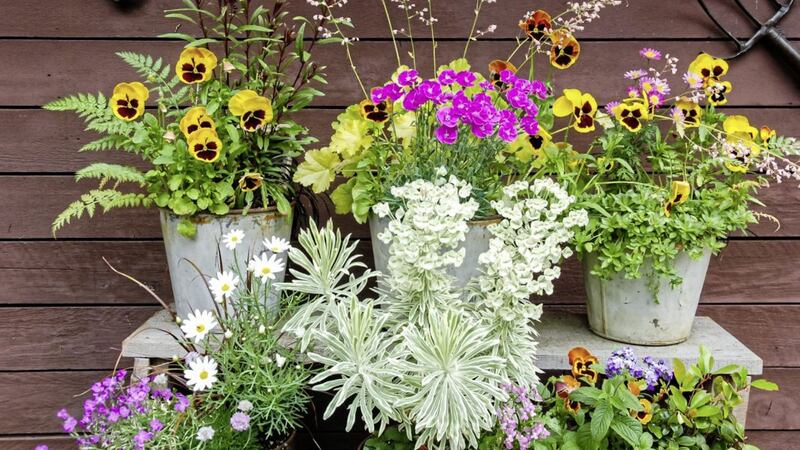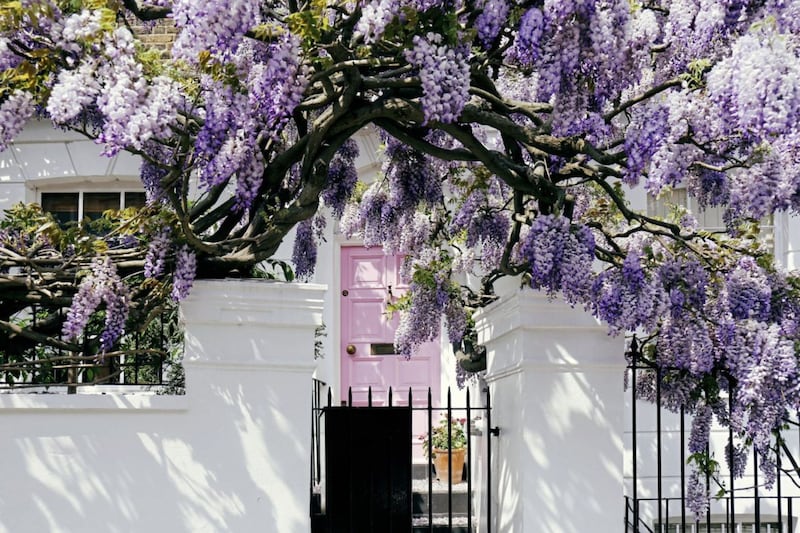COME early June, as a rule of thumb, I like to have most of this summer’s ornamentals in place. That is to say, that all the flowers and stuff whose growth is going to climax over the coming season are already planted and contented. Seed sowing and transplanting in the vegetable garden will continue but there will be no new summer-blooming residents in the beds and borders from here on in.
There have, and will be, exceptions to this rule but in terms of general plant health and wellbeing, I contend that early June marks a cut-off point for both perennials and annuals.
One of the aforementioned exceptions is containers, such as Belfast sink, terracotta pot or fish box, which due to their more ‘controlled’ environment can be better managed.
Using containers is something I undertake with a little reluctance, as only a minority of plants flourish under such incarceration. But on a patio – whatever it’s made of – it’s essential to temper the hard, reflective surface by breaking it up with colour and softer textures or shapes.
However, the disadvantage for plants in containers vis-a-vis their terra firma counterparts is getting adequate water. Due to their standalone nature, pots, sinks, planters and baskets are unable to retain moisture the same way soil does and therefore require additional watering. This means they’re more labour intensive, whether it rains or not.
Choosing the right plants and making the right preparations will reduce the amount of watering you need to do. Ideal candidates for containers are herbs, because they’ll be handy to the kitchen and many of them are reasonably resistant to drought.
If you’re gardener with even the mildest culinary inclination then growing your own herbs is a must. There’s something very satisfying about plucking a handful of fresh leaves from the garden, adding them to a dish and turning an otherwise mundane meal into something distinguished and authentic.
To raise your own vegetables in any quantity you need a decent sized piece of ground. This is not the case with herbs, however, which generally don’t demand the same degree of husbandry either. The smallest back yard or even a window ledge, provided it gets some sun, should be able to sustain a supply of herbs to keep any amateur chef happy.
Containerised on my own patio are mint, thyme and bay, all of which appear content. In the past, I’ve grown rocket, parsley and rosemary, though the latter struggled and only prospered after being transplanted into a bed.
Annual bedding plants are best in containers, in my opinion, and they put all their effort into growing over one season – though to get the best from them you'll need to deadhead regularly to encourage further blooming. Lobelia, petunia and osteospernum are recommended for beginners. In my experience, nasturtiums also make great container plants.
It's important to ensure you get good, water-retentive, free draining (peat free) compost for your containers. This usually means choosing pricier products rather than the budget, all-purpose stuff which often has the consistency of sawdust and is bereft of goodness. Unless you’ve made your own, of course.
When planting up the container, add some horticultural grit to help drainage and even some water-retaining crystals, which will turn into gel when water is added. Regular feeding with a liquid feed will ensure plenty of rapid growth, but take care not to overfeed or you'll end up with lots of foliage and few flowers.
Containers look best in groups rather than in isolation, though if finances are limited you may have to build up your collection over time. And remember – even if it rains, give your containers a drink.




